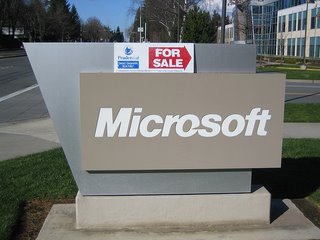
A fascinating but rather dated article caught my attention as I was taking my daily dip into the blogosphere. It brings up an interesting debate that continues to rule the realms of both the corporate and information world: is Google taking over Microsoft's reign? Or are they even competitors in the first place?
According to
Why Microsoft can’t best Google, the answer is yes, Google will rule the day (which is tomorrow). Here is why Phil Wainewright thinks so:
(1) Microsoft wants everyone to have a rich desktop experience, Google wants everyone to have a rich Internet experience.
(2) Microsoft's business model depends on everyone upgrading their computing environment every two to three years. Google's depends on everyone exploring what's new in their computing environment every day.
(3) Microsoft looks at the world from a perspective of desktop+Internet. Google looks at the world from a perspective of Internet+any device.
(4) Microsoft wants computers to help individuals do more unaided. Google wants computers to help individuals do more in collaboration. In the Internet age, who wants to work alone any more, when all the unexplored opportunity is in collaborative endeavor?
(5) In a few year's time, who's going to still be working at a desk anyway?
The most interesting food for thought comes from the blog comments. Take a look. Apparently, the reactions are mixed; not everyone thinks that
Google and
MSN are competitors. One commentator argued that it's comparing "
apples to icebergs." In my opinion, Google is certainly moving into MSN's dominance and in many ways (but not all), has surpassed it. However, one piece of technology which has never taken off has been
Googletalk, which is supposed to be the rival to
MSN Messenger. On the other hand,
Gmail is slowly but surely equalling
MSN Hotmail in terms of popularity (and definitely ease of use). Time will tell who will win, or whether winning is the end goal...














 And we're off! Change for this blog has forever been at the back of my mind throughout the latter stages of the summer; I've been planning how to establish a new look for quite a while. (Not to say that the previous design wasn't adequate -- it was time for a change). Here's the push that paved the way for this to be done:
And we're off! Change for this blog has forever been at the back of my mind throughout the latter stages of the summer; I've been planning how to establish a new look for quite a while. (Not to say that the previous design wasn't adequate -- it was time for a change). Here's the push that paved the way for this to be done: 